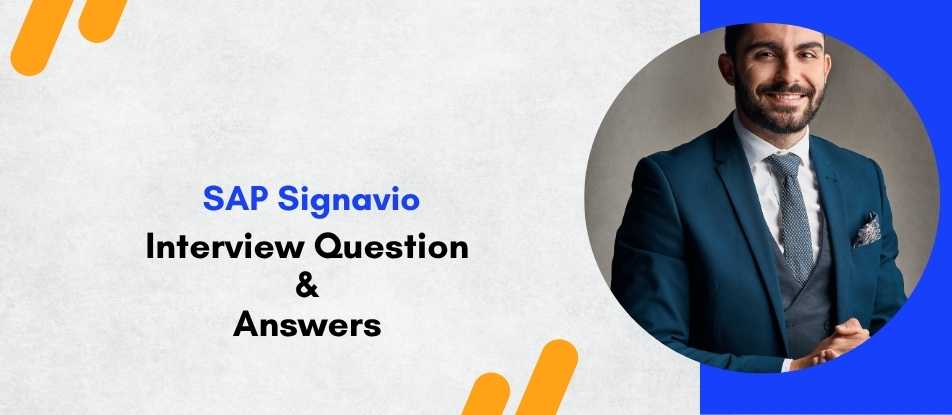
The SAP Signavio Course equips professionals with advanced skills to visualize, analyze, and optimize business processes for digital transformation. Learners explore the full SAP Signavio suite, including Process Insights, Process Intelligence, Process Manager, and Collaboration Hub. Through practical exercises, they gain hands-on experience in process mining, workflow governance, and performance benchmarking. Ideal for SAP consultants, business analysts, and process managers, this training empowers participants to enhance operational efficiency, ensure compliance, and lead successful SAP S/4HANA transformation initiatives across organizations.
SAP Signavio Training Interview Questions Answers - For Intermediate
1. How does SAP Signavio Process Intelligence enhance process transparency?
SAP Signavio Process Intelligence provides a data-driven approach to understanding how business processes truly operate. By applying process mining techniques, it reconstructs real process flows using event logs from enterprise systems. This transparency enables organizations to visualize deviations, uncover bottlenecks, and identify root causes behind inefficiencies, facilitating continuous process improvement based on factual insights rather than assumptions.
2. What data sources can be integrated with SAP Signavio Process Intelligence?
Process Intelligence can connect with multiple data sources, including SAP S/4HANA, SAP ECC, CRM, ERP, and third-party applications such as Salesforce or ServiceNow. Through connectors and APIs, event logs are extracted to create an end-to-end process picture. The ability to merge cross-system data provides a unified perspective that supports complex business transformation initiatives.
3. How does SAP Signavio support digital transformation initiatives?
SAP Signavio aligns business and IT teams through shared visibility and collaborative modeling, ensuring that digital transformation projects start with a deep understanding of existing processes. Its analytical tools highlight inefficiencies and automation opportunities, while its governance and simulation features enable organizations to design optimized, future-ready workflows that align with strategic goals.
4. Explain the relationship between SAP Signavio Process Manager and Process Governance.
Process Manager focuses on designing and documenting business processes, while Process Governance automates and enforces them. Once a process is modeled and approved in Process Manager, Governance executes it through defined workflows, ensuring compliance with organizational rules. Together, they form a closed loop between process design and execution.
5. What is value acceleration in SAP Signavio, and why is it important?
Value acceleration refers to SAP Signavio’s ability to rapidly deliver measurable process improvement by combining process insights, benchmarking, and best-practice templates. It shortens transformation timelines by allowing teams to identify “quick wins” and prioritize process changes that yield the highest business impact. This approach minimizes disruption while maximizing return on investment.
6. How does SAP Signavio support process standardization across global operations?
The platform promotes global standardization through centralized process repositories and consistent modeling standards. Templates and reusable components ensure uniform process definitions across business units. This harmonization reduces duplication, simplifies compliance audits, and supports smoother global rollouts of SAP S/4HANA or other ERP systems.
7. What are accelerators in SAP Signavio Process Insights?
Accelerators are predefined content packages that provide best-practice metrics, KPIs, and process analyses for specific industries or SAP modules. They enable organizations to jump-start their analysis without extensive configuration. By comparing their own performance against these accelerators, businesses can quickly identify deviations and areas requiring optimization.
8. How does SAP Signavio complement SAP Solution Manager and SAP Cloud ALM?
SAP Signavio provides the process-centric analysis and design capabilities, while SAP Solution Manager or SAP Cloud ALM handles implementation, testing, and operations. Signavio models can be imported into these systems to guide configuration, ensuring that technical execution aligns with business process intent. This integration bridges the gap between process design and system deployment.
9. What is the role of benchmarking in SAP Signavio Process Insights?
Benchmarking allows organizations to compare their process performance against peers or industry standards using SAP’s extensive anonymized dataset. This contextual understanding helps businesses assess their maturity level, justify transformation efforts, and track progress toward achieving best-in-class operational excellence.
10. How does SAP Signavio support the “Fit-to-Standard” approach during S/4HANA transformation?
During an S/4HANA transformation, SAP Signavio enables a Fit-to-Standard approach by mapping current business processes against SAP standard processes. It helps identify customizations, redundancies, and opportunities to adopt best-practice templates. This reduces complexity, shortens implementation cycles, and ensures the organization aligns closely with standard SAP functionality.
11. How can SAP Signavio improve collaboration between business and IT teams?
Through its Collaboration Hub and unified repository, SAP Signavio brings all stakeholders onto one platform. Business users can visualize processes, propose improvements, and comment directly within the models, while IT teams can translate those requirements into system configurations. This shared environment fosters alignment and reduces miscommunication across departments.
12. What is variant analysis in SAP Signavio, and how is it used?
Variant analysis compares multiple versions of a process to identify deviations and inefficiencies. In SAP Signavio, this feature is particularly useful in multinational organizations where the same process is executed differently across regions. By identifying performance gaps between variants, companies can standardize best-performing practices and improve overall process consistency.
13. How does SAP Signavio contribute to sustainability and ESG reporting?
SAP Signavio helps organizations embed sustainability goals into business processes by tracking metrics such as energy consumption, resource utilization, or waste reduction. By integrating process analytics with ESG objectives, companies can redesign workflows that support sustainable operations and provide measurable data for environmental and social governance reporting.
14. What are the deployment options available for SAP Signavio?
SAP Signavio is primarily a cloud-based SaaS platform hosted on SAP Business Technology Platform (BTP). However, hybrid deployment models can be used when integration with on-premise SAP ERP systems is required. Its cloud nature ensures scalability, automatic updates, and global accessibility while maintaining enterprise-grade security standards.
15. What are some best practices for successfully implementing SAP Signavio in an organization?
Successful implementation begins with clear governance and stakeholder alignment. Organizations should define process ownership, prioritize key areas for transformation, and start with pilot processes before scaling. Continuous training, change-management initiatives, and integration with analytics tools ensure that SAP Signavio becomes an integral part of the organization’s process-improvement culture.
SAP Signavio Training Interview Questions Answers - For Advanced
1. How does SAP Signavio enable data-driven business process transformation rather than intuition-driven redesign?
SAP Signavio transforms business process improvement from a subjective exercise into a data-driven discipline. By combining process mining (through Process Intelligence) with operational benchmarking (via Process Insights), the platform delivers quantitative evidence of process performance. Every improvement proposal is supported by factual metrics such as cycle time, exception frequency, or automation potential. These insights guide teams toward changes that deliver measurable impact rather than relying on guesswork. The unified data foundation ensures that decisions are consistent across departments, enabling process owners, analysts, and executives to collaborate using a single version of operational truth.
2. What differentiates SAP Signavio from other process-mining and BPM tools on the market?
Unlike standalone process-mining or BPM platforms, SAP Signavio integrates analytical, modeling, collaboration, and execution capabilities within one environment tightly connected to SAP S/4HANA and SAP BTP. Its pre-built content packs leverage SAP’s global benchmark data to provide actionable recommendations out of the box. Additionally, it links process visualization with governance, risk, and compliance (GRC) functions—enabling enterprises to not only discover inefficiencies but also institutionalize continuous improvement. The holistic “discover-design-simulate-govern-optimize” cycle makes SAP Signavio a strategic transformation engine rather than a tactical analysis tool.
3. How can SAP Signavio be used to align strategic KPIs with operational processes?
SAP Signavio enables vertical alignment between enterprise strategy and execution through KPI linking. Strategic objectives are translated into measurable process indicators within Process Insights, ensuring that each business process contributes directly to corporate goals. Dashboards provide visibility into real-time performance, while alerts highlight when key processes deviate from target thresholds. This alignment closes the traditional gap between planning and operations, allowing management to trace every strategic KPI—such as revenue growth, on-time delivery, or compliance rate—back to the underlying process behavior driving it.
4. Describe how SAP Signavio facilitates cross-functional collaboration in process transformation projects.
Cross-functional collaboration is a cornerstone of SAP Signavio’s architecture. The Collaboration Hub serves as a shared workspace where stakeholders—from business users to IT architects—can comment, annotate, and approve process diagrams in real time. This transparency eliminates the silos common in transformation projects. Integration with Microsoft Teams, SAP Build, and email notifications ensures discussions remain traceable. Because all feedback is tied directly to process elements, decisions are documented contextually, improving accountability and accelerating consensus without endless meetings or document exchanges.
5. How can SAP Signavio accelerate hyperautomation initiatives?
SAP Signavio identifies automation candidates by analyzing process logs for repetitive, rule-based, or time-consuming activities. Once identified, these can be modeled in Process Manager and orchestrated through SAP Build Process Automation on SAP BTP. The analytics layer quantifies the potential time and cost savings, helping prioritize automation investments. After deployment, Process Intelligence monitors post-automation performance, verifying ROI and uncovering new optimization opportunities. This creates a self-reinforcing automation loop driven by factual evidence rather than assumptions.
6. In what ways does SAP Signavio enhance change-impact analysis during large SAP S/4HANA programs?
Change-impact analysis within SAP Signavio connects business process models with system configurations and master data dependencies. When transformation teams modify a process or migrate functionality to SAP S/4HANA, Signavio highlights affected touchpoints—such as roles, interfaces, or compliance controls. This foresight minimizes disruption, prevents regression errors, and ensures smoother cutovers. The platform’s ability to simulate changes across interconnected processes allows program leaders to forecast downstream effects, align testing strategies, and manage stakeholder expectations before implementation begins.
7. Explain how process simulation in SAP Signavio contributes to financial optimization.
Process simulation enables organizations to test multiple process scenarios and quantify their financial impact before actual rollout. Using parameters like resource utilization, lead time, and transaction volume, SAP Signavio can calculate cost implications for each alternative design. For instance, it can compare centralized versus decentralized approval flows or different supplier payment terms. By evaluating these simulated results, decision-makers can choose the configuration that balances efficiency with cost reduction, effectively turning process design into a financial planning tool.
8. How does SAP Signavio support advanced compliance management in regulated industries?
In industries like pharmaceuticals, banking, or utilities, SAP Signavio embeds compliance directly into process design and execution. Governance workflows enforce mandatory approvals, while documentation templates capture regulatory evidence. Integrated risk catalogs help map process steps to specific control requirements such as ISO 9001, SOX, or GDPR. The platform also provides audit trails for every change made to a process model. This combination of proactive control and historical traceability allows compliance officers to demonstrate conformity effortlessly during audits and to respond swiftly to new regulatory mandates.
9. Discuss the integration of SAP Signavio with external process-mining or analytics ecosystems.
Although SAP Signavio includes native process-mining capabilities, it remains interoperable with other ecosystems. APIs and connectors allow data exchange with tools such as Celonis, Power BI, or Tableau for extended analytics. Data models exported from Process Intelligence can feed enterprise data lakes for advanced AI analytics. Conversely, insights from external systems can be visualized within Signavio’s Collaboration Hub, ensuring that multiple analytics sources coexist within a unified business process framework. This flexibility is critical in heterogeneous enterprise landscapes.
10. How does SAP Signavio enable organizations to move toward composable business processes?
Composable business processes involve modular, reusable workflows that can be rapidly assembled to meet changing business needs. SAP Signavio enables this by modeling processes as discrete capabilities linked through APIs within SAP BTP. Process fragments can be reused across departments or product lines, reducing redundancy. With Signavio’s governance and cataloging features, these components are version-controlled and discoverable enterprise-wide. This approach creates organizational agility, allowing rapid adaptation to market shifts without full-scale process redesign.
11. What is the strategic significance of linking SAP Signavio with SAP LeanIX or Enterprise Architecture Designer?
Connecting SAP Signavio with tools like SAP LeanIX or Enterprise Architecture Designer ensures that business processes and IT architecture remain synchronized. Each process in Signavio can be mapped to the applications, data objects, and technologies that support it. This visibility helps enterprise architects assess the impact of decommissioning systems or introducing new capabilities. Moreover, it aligns transformation roadmaps with architectural constraints, ensuring that IT investments directly support the process and capability goals defined by business leaders.
12. How can SAP Signavio assist in post-merger integration (PMI) of organizations?
During mergers or acquisitions, enterprises often face disparate systems, processes, and compliance structures. SAP Signavio accelerates PMI by enabling side-by-side comparison of both organizations’ process landscapes using process-mining data. Overlaps, redundancies, and conflicting standards are identified visually. Process harmonization workshops can then use shared models to design unified future-state processes. Governance workflows manage approvals, while Signavio’s repository ensures continuous alignment during the integration phase. This reduces complexity, improves synergy realization, and shortens the time to operational consolidation.
13. How does SAP Signavio drive predictive and prescriptive process optimization through AI integration?
AI integration transforms SAP Signavio from a diagnostic tool into a predictive decision engine. By analyzing historical process data, the platform’s machine-learning algorithms can predict potential delays, compliance breaches, or resource bottlenecks before they occur. Prescriptive capabilities go further by recommending corrective actions, such as reallocating resources or adjusting approval thresholds. Over time, the AI models learn from outcomes, enhancing accuracy. This predictive-prescriptive cycle helps organizations prevent inefficiencies proactively rather than reacting after failures occur.
14. In what ways does SAP Signavio contribute to corporate sustainability and circular-economy strategies?
SAP Signavio allows sustainability metrics to be embedded within process models, linking operational efficiency to environmental performance. For example, logistics or production workflows can include carbon-emission KPIs or waste-reduction targets. Integration with SAP Sustainability Control Tower aggregates real-time environmental data, enabling organizations to simulate greener process alternatives. By visualizing the environmental impact of each business step, enterprises can redesign operations to minimize waste, encourage recycling, and align with circular-economy principles—creating processes that are both profitable and planet-positive.
15. How is the evolution of SAP Signavio shaping the future of enterprise performance management (EPM)?
SAP Signavio is redefining enterprise performance management by merging operational analytics with strategic planning. Traditional EPM systems focus on financial metrics, but Signavio extends this to include process efficiency, compliance, and experience indicators. Future releases are expected to integrate generative AI and digital-twin capabilities, enabling dynamic simulations of business outcomes under different strategic scenarios. This evolution will allow leaders to manage not only financial health but also the end-to-end process agility, resilience, and customer value generation that determine long-term competitiveness.
Course Schedule
| Dec, 2025 | Weekdays | Mon-Fri | Enquire Now |
| Weekend | Sat-Sun | Enquire Now | |
| Jan, 2026 | Weekdays | Mon-Fri | Enquire Now |
| Weekend | Sat-Sun | Enquire Now |
Related Courses
Related Articles
Related Interview
- IBM Platform LSF Advanced Administration and Configuration for Linux (H023G) Training Interview Questions Answers
- C4H320 - SAP Commerce Cloud Business User Training Interview Questions Answers
- SAP Cloud ALM for Implementation (CALM20) Interview Questions Answers
- Workday Advanced Reporting Training Interview Questions Answers
- SAP Logistics Execution (LE) Training Interview Questions Answers
Related FAQ's
- Instructor-led Live Online Interactive Training
- Project Based Customized Learning
- Fast Track Training Program
- Self-paced learning
- In one-on-one training, you have the flexibility to choose the days, timings, and duration according to your preferences.
- We create a personalized training calendar based on your chosen schedule.
- Complete Live Online Interactive Training of the Course
- After Training Recorded Videos
- Session-wise Learning Material and notes for lifetime
- Practical & Assignments exercises
- Global Course Completion Certificate
- 24x7 after Training Support


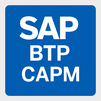
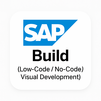
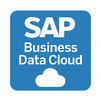
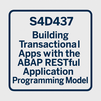
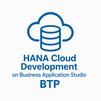
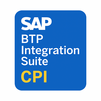
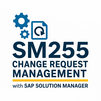
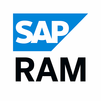

 Join our Live Instructor-Led online classes delivered by industry experts
Join our Live Instructor-Led online classes delivered by industry experts